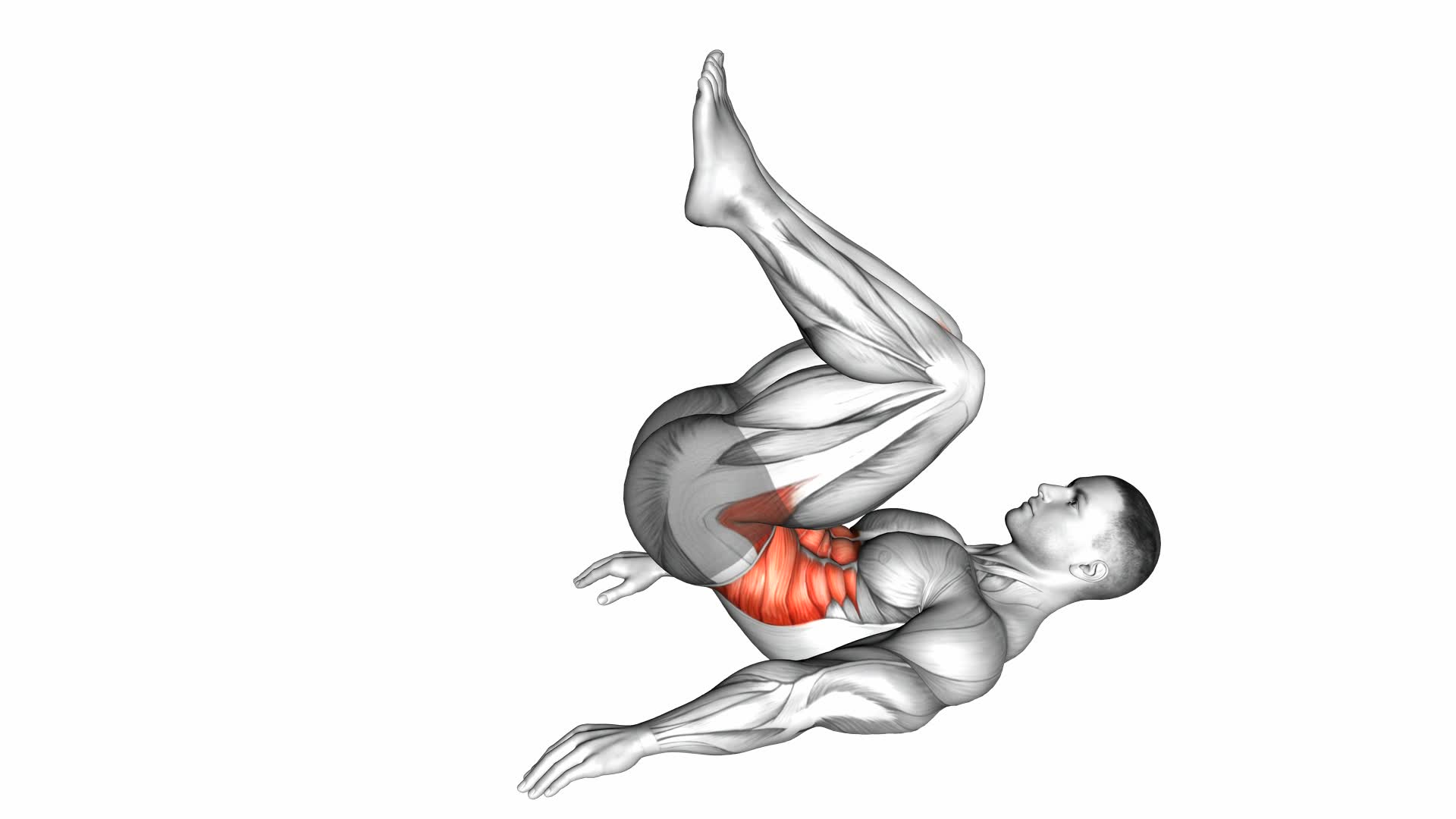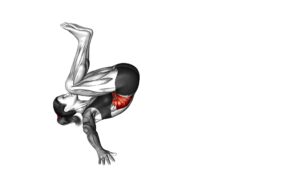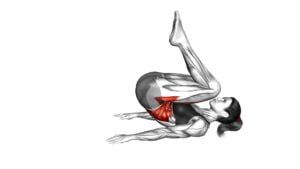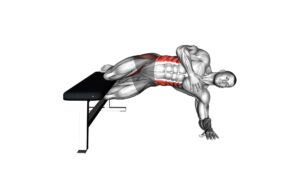Hip Raise (Bent Knee) – Video Exercise Guide & Tips

Get ready to strengthen your hips with the hip raise (bent knee) exercise! In this video exercise guide, we'll show you the proper form and technique to maximize your results.
Watch This Exercise Video
You'll also learn about the equipment needed, common mistakes to avoid, and variations to challenge yourself.
Whether you're a beginner or an advanced fitness enthusiast, we've got tips to help you get the most out of your hip raise (bent knee) workout.
Let's get started!
Key Takeaways
- Hip Raise (Bent Knee) is an effective exercise for strengthening glutes and core.
- The bent knee variation targets glute muscles more than the straight leg variation.
- Hip Raise (Bent Knee) reduces stress on the lower back, making it safer for those with back issues.
- It can be incorporated into a full body workout routine and paired with other lower body exercises for a challenging workout.
Benefits of Hip Raise (Bent Knee)
To understand the benefits of the hip raise (bent knee), you should know that it's an effective exercise for strengthening your glutes and core. When comparing the hip raise (bent knee) with the hip raise (straight leg), the bent knee variation is generally considered more effective in targeting the glute muscles. This is because bending the knees allows for a greater range of motion, activating the glutes to a higher degree. Additionally, the bent knee variation also reduces stress on the lower back, making it a safer option for those with back issues.
Incorporating the hip raise (bent knee) into a full body workout routine can be done by following a few tips and strategies. Firstly, it's important to ensure proper form by lying on your back with your knees bent and feet flat on the ground. Keep your core engaged and lift your hips off the ground until your body forms a straight line from your knees to your shoulders. Hold for a second and then slowly lower back down. It's recommended to start with 2-3 sets of 10-15 repetitions and gradually increase the intensity as you get stronger.
Equipment Needed for Hip Raise (Bent Knee)
You will need a yoga mat for performing the hip raise (bent knee) exercise. This simple piece of equipment will provide you with the necessary support and cushioning for your back and hips during the exercise.
In addition to a yoga mat, there's no other specific equipment required for this exercise. However, you can use a stability ball to add an extra challenge to the exercise if you want to further engage your core muscles.
Here are two modifications and adaptations you can make to target different muscles and adjust the difficulty level:
- To target your glutes and hamstrings more, you can place your feet on a raised surface, such as a step or bench.
- If you find the exercise too challenging, you can start by performing it with both feet on the ground and gradually progress to the bent knee position.
By incorporating these modifications and adaptations, you can customize the hip raise exercise to suit your fitness level and target specific muscles.
Now that you know the equipment needed, let's move on to the next section to learn about the proper form and technique for performing the hip raise (bent knee) exercise.
Proper Form and Technique for Hip Raise (Bent Knee)
When performing the hip raise (bent knee) exercise, it's important to maintain proper form and technique. This exercise is an effective way to improve core strength and can be easily incorporated into a full body workout routine.
To ensure you're performing the hip raise correctly, start by lying flat on your back with your knees bent and feet flat on the ground. Place your arms by your sides, palms facing down. Engage your core by pulling your belly button towards your spine.
Slowly raise your hips off the ground, keeping your feet and shoulders grounded. Focus on squeezing your glutes and engaging your core throughout the movement. Avoid arching your back or using momentum to lift your hips.
Pause at the top for a moment before slowly lowering your hips back down to the starting position. Aim for controlled movements and repeat for the desired number of repetitions.
Common Mistakes to Avoid During Hip Raise (Bent Knee)
One common mistake to avoid during the hip raise (bent knee) exercise is allowing your knees to spread apart. This can happen when you don't engage your glutes and core muscles properly, causing your knees to move outwards instead of staying in line with your hips.
Here are some tips for improvement:
- Keep your knees aligned: Make sure to focus on keeping your knees in line with your hips throughout the exercise. This will help target the correct muscles and prevent unnecessary strain on your joints.
- Engage your glutes: To avoid the mistake of allowing your knees to spread apart, it's important to activate your glute muscles. Squeeze your glutes as you lift your hips off the ground, and maintain this contraction throughout the movement.
- Strengthen your core: A strong core is essential for maintaining proper form during the hip raise exercise. Engage your abdominal muscles by pulling your belly button in towards your spine as you lift your hips.
- Use a mirror or a trainer: It can be helpful to have visual feedback when performing the hip raise exercise. Use a mirror to check your form and make sure your knees stay in line with your hips. Alternatively, you can work with a trainer who can provide guidance and correct any mistakes in real-time.
Variations and Progressions for Hip Raise (Bent Knee)
To explore different variations and progressions for the hip raise (bent knee) exercise, try incorporating additional resistance or modifying the position of your feet. For advanced variations, you can add resistance by placing a weight plate or dumbbell on your hips while performing the hip raise. This will increase the intensity and challenge your muscles even more.
Another option is to perform the exercise on an unstable surface, such as a stability ball or a BOSU ball. This will engage your core muscles and improve your balance and stability.
Incorporating hip raise (bent knee) into a full body workout routine is a great way to target your glutes, hamstrings, and core while also working on your overall strength and stability. You can include the hip raise exercise in a circuit training routine by performing it for a certain number of repetitions or for a specific amount of time. Pairing it with other lower body exercises like squats or lunges can create a challenging lower body workout.
Alternatively, you can incorporate the hip raise exercise in a superset or a triset, where you perform two or three different exercises back-to-back with little to no rest in between. This will keep your heart rate up and maximize your calorie burn.
Remember to always listen to your body and choose the variations and progressions that are appropriate for your fitness level.
Tips for Getting the Most Out of Hip Raise (Bent Knee)
To maximize your results with the hip raise (bent knee) exercise, focus on engaging your glutes and core muscles throughout the movement. This will help you get the most out of this exercise and target the intended muscle groups effectively.
Here are a few tips to help you achieve optimal results:
- Use proper form: Keep your feet flat on the ground, hip-width apart, and your knees bent at a 90-degree angle. Make sure your hips are lifted off the ground while maintaining a straight line from your knees to your shoulders.
- Avoid common misconceptions: Many people mistakenly arch their lower back or push their hips too high during the hip raise exercise. This can shift the focus away from the glutes and core and put unnecessary strain on the lower back. Focus on keeping your core engaged and your movements controlled.
When performing the hip raise exercise, it's important to pay attention to your breathing technique. Here's what you need to know:
- Breathe out on the way up: As you lift your hips off the ground, exhale through your mouth. This can help activate your core muscles and provide stability during the movement.
- Breathe in on the way down: As you lower your hips back down to the starting position, inhale through your nose. This allows for proper oxygen intake and prepares your body for the next repetition.
Frequently Asked Questions
How Many Sets and Reps Should I Do for Hip Raise (Bent Knee) to See Results?
To maximize results with hip raise (bent knee), it's important to focus on the number of sets and reps.
The proper form and technique are also crucial. By incorporating this exercise into your routine, you can see improvements.
Remember to start with a manageable number of sets and reps and gradually increase as you get stronger.
Consistency and proper form are key to achieving the best results from hip raise (bent knee).
Can I Do Hip Raise (Bent Knee) if I Have Lower Back Pain?
If you're experiencing lower back pain, it's important to listen to your body and avoid exercises that worsen the discomfort.
Hip raise (bent knee) can put strain on the lower back, so it may not be the best choice for you right now.
However, there are alternative exercises that can strengthen your core without causing pain.
The benefits of hip raise (bent knee) include increased stability and improved posture.
Consider consulting with a healthcare professional for personalized guidance.
Is It Normal to Feel My Hamstrings Working During Hip Raise (Bent Knee)?
Feeling your hamstrings working during hip raise (bent knee) is normal. This exercise targets your glutes and hamstrings, so it's expected to feel some activation in that area.
However, if you have lower back pain, it's important to listen to your body. Consider modifying the exercise or consulting a professional for alternative options that put less strain on your lower back.
Can I Do Hip Raise (Bent Knee) With Ankle Weights for Added Resistance?
Yes, you can definitely add ankle weights to your hip raise (bent knee) exercise for added resistance. Using ankle weights can provide benefits such as increased muscle activation and strength building.
However, it's important to start with lighter weights and gradually increase the resistance to avoid straining your muscles.
If you prefer alternative exercises, you can try glute bridges or single-leg hip thrusts, which also target the glutes and hamstrings effectively.
How Long Should I Hold the Top Position of the Hip Raise (Bent Knee) Exercise?
To maximize the benefits of the hip raise (bent knee) exercise, focus on the top position, where your hips are raised. Hold this position for at least 2-3 seconds before lowering back down. This will engage your glutes and core muscles more effectively.
Avoid rushing through the exercise and sacrificing form for speed.
Remember to progress gradually, increasing the duration of the hold as you get stronger.
Conclusion
In conclusion, the hip raise (bent knee) is a highly effective exercise for strengthening the glutes and core muscles. It can be performed with minimal equipment and is suitable for individuals of all fitness levels.
By maintaining proper form and avoiding common mistakes, you can maximize the benefits of this exercise. Additionally, incorporating variations and progressions can help to continuously challenge and improve your strength.
Remember to always listen to your body and consult a fitness professional if needed.

Author
Years ago, the spark of my life’s passion ignited in my mind the moment I stepped into the local gym for the first time. The inaugural bead of perspiration, the initial endeavor, the very first surge of endorphins, and a sense of pride that washed over me post-workout marked the beginning of my deep-seated interest in strength sports, fitness, and sports nutrition. This very curiosity blossomed rapidly into a profound fascination, propelling me to earn a Master’s degree in Physical Education from the Academy of Physical Education in Krakow, followed by a Sports Manager diploma from the Jagiellonian University. My journey of growth led me to gain more specialized qualifications, such as being a certified personal trainer with a focus on sports dietetics, a lifeguard, and an instructor for wellness and corrective gymnastics. Theoretical knowledge paired seamlessly with practical experience, reinforcing my belief that the transformation of individuals under my guidance was also a reflection of my personal growth. This belief holds true even today. Each day, I strive to push the boundaries and explore new realms. These realms gently elevate me to greater heights. The unique combination of passion for my field and the continuous quest for growth fuels my drive to break new ground.







